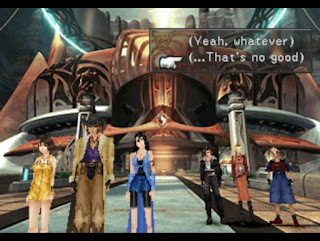Ateroid Base - 2015 - XboxOne/PC
Lovers in a Dangerous Spacetime is the mouthful of a title given to developer Asteroid Base's inaugural game. I actually got to preview this at PAX Prime earlier this year and it was one of the most popular titles in the indie area and with good reason. Lovers is a cooperative space exploration game where two players must cooperate to man various stations on a spaceship to navigate through space and rescue little space critters. In order to complete a level, a certain number of little space critters has to be rescued for the exit to be unlocked but if you and your partner are feeling like completionists, you can collect all of the critters in each stage to get access to different model ships and unlock other powerups faster. The locations of the critters and the entire world as a whole are totally differently systematically generated on each run, giving every playthrough a fresh feel. Once you find a critter, usually some small challenge has to be completed before you can rescue them. For example, you may have to fight several waves of enemies, escape an explosion or fight a mini boss.
There are various stations to man on each ship including weapons, shields, engines and a powerful yamato cannon weapon. There are several campaigns that are made up of 4 levels and a final boss fight. Each level offers upgrade crystals that you can install in your systems that will persist throughout the campaign. Deciding which crystals to place in which systems is initially a fun experimental learning process, but I've found once you know what the crystal combinations do, you usually fall into a pattern of upgrading that results in a familiar ship layout each time. But there are also several ship layouts to unlock in the game, each with their own stats and quirky gameplay rules. For instance, there's one unlockable ship that constantly rotates around while you play, making locating and controlling your character within the ship quite a challenge, but as a tradeoff, the ship is also immune to terrain damage. I'm a sucker for these kinds of unlockable gameplay variations and this game reminded me a bit of my favorite FTL from the space exploration and battles right down to the unlockable ships. Obviously the gameplay is nowhere close to the same, but there are similarities to be drawn between the two roguelike space exploration games
There are only two crew members, making coordination and teamwork a key to success in this game. Communication with your partner is necessary and coming up with a good strategy is vital so that you and your teammate aren't running to the same stations to man the same systems. Once you get that strategy established and you and your partner know how to run the ship like seasoned space travelers, it's a really neat feeling. But it's also just as fun to yell and scream at your partner when things are going horribly wrong and your ship is about to explode
Lovers in a Dangerous Spacetime Video Review
Summary
Lovers in a Dangerous Spacetime offers the best experiences for couch co-op play. It's conceptually simple to learn and easy to pick up and play. But there's still a decent amount of strategy, skill and depth to be found here as well, and applying these strategies skill and depth of understanding of the game is especially necessary in the later levels where the difficulty gets ratcheted up quite a bit. I really enjoyed this game; it's one of the best couch cooperative experiences I've had. If you and a friend are looking for something to play, you can't go wrong with Lovers in a Dangerous Spacetime
There are only two crew members, making coordination and teamwork a key to success in this game. Communication with your partner is necessary and coming up with a good strategy is vital so that you and your teammate aren't running to the same stations to man the same systems. Once you get that strategy established and you and your partner know how to run the ship like seasoned space travelers, it's a really neat feeling. But it's also just as fun to yell and scream at your partner when things are going horribly wrong and your ship is about to explode
Lovers in a Dangerous Spacetime Video Review
Summary
Lovers in a Dangerous Spacetime offers the best experiences for couch co-op play. It's conceptually simple to learn and easy to pick up and play. But there's still a decent amount of strategy, skill and depth to be found here as well, and applying these strategies skill and depth of understanding of the game is especially necessary in the later levels where the difficulty gets ratcheted up quite a bit. I really enjoyed this game; it's one of the best couch cooperative experiences I've had. If you and a friend are looking for something to play, you can't go wrong with Lovers in a Dangerous Spacetime































